
- Subject:
- Arts and Humanities
- Material Type:
- Lesson Plan
- Author:
- Skyler Smyres
- Tamara Crow
- Date Added:
- 01/15/2018


The students will be reading The Diary of Anne Frank and using videos and tours to learn more about why she was hiding and what eventually happened to her.
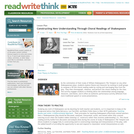
After reading "The Tempest" or any other play by William Shakespeare, students work in small groups to plan, compose, and perform a choral reading based on a character or theme.

Students will read and analyze a short story from the Southern Gothic genre entitled "The Life you Save May be Your Own" by Flannery O'Conner. They will continue to explore the ideas of human compassion and morality by examining the apparent lack of compassion in the characters of Mr. Shiftlet and the old woman, Lucynell Crater. Students will use close reading strategies to identify examples of indirect characterization that contribute to their analysis of these two central characters in the text. Image source: "Mockingbird" by skeeze on Pixabay.com.

This short video takes viewers through the journey that Frankenstein makes throughout the novel. Each location is shown close up on a map with a brief description of what occurs in each location.
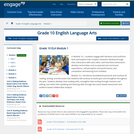
In Module 10.1, students engage with literature and nonfiction texts and explore how complex characters develop through their interactions with each other, and how these interactions develop central ideas such as parental and communal expectations, self-perception and performance, and competition and learning from mistakes.
Find the rest of the EngageNY ELA resources at https://archive.org/details/engageny-ela-archive .
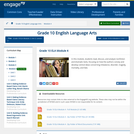
In this module, students read, discuss, and analyze nonfiction and dramatic texts, focusing on how the authors convey and develop central ideas concerning imbalance, disorder, tragedy, mortality, and fate.
Find the rest of the EngageNY ELA resources at https://archive.org/details/engageny-ela-archive .

In this lesson, students will read and analyze "The Interlopers" by Saki (H. H. Munro). Lesson 1 from the Author's Craft unit focuses primarily on character. Students will examine how the motivations of Georg and Ulrich drive the plot, develop the theme, and enhance the irony. The lesson requires student to collect evidence, discuss, and complete a writing assignment. It also offers additional stories to extend the lesson. Image source: "Forest" by flo222 on Pixabay.com.
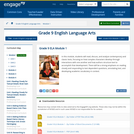
In this module, students will read, discuss, and analyze contemporary and classic texts, focusing on how complex characters develop through interactions with one another and how authors structure text to accomplish that development. There will be a strong emphasis on reading closely and responding to text dependent questions, annotating text, and developing academic vocabulary in context.
Find the rest of the EngageNY ELA resources at https://archive.org/details/engageny-ela-archive .
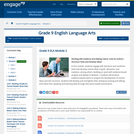
In this module, students engage with literature and nonfiction texts that develop central ideas of guilt, obsession, and madness, among others. Building on work with evidence-based analysis and debate in Module 1, students will produce evidence-based claims to analyze the development of central ideas and text structure. Students will develop and strengthen their writing by revising and editing, and refine their speaking and listening skills through discussion-based assessments.
Find the rest of the EngageNY ELA resources at https://archive.org/details/engageny-ela-archive .
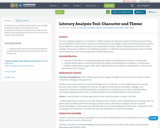
In this resource, students will be asked to use a graphic organizer in order to identify and track the development of theme and character in a literary text. Students will use evidence from the text to construct an evidence based response.

Module over W.W. Jacobs "The Monkey's Paw"
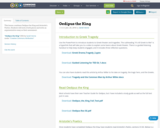
This lesson combines Oedipus the King and Aristotle's Poetics. Students will look at both pieces and write an argumentative essay as their assessment.
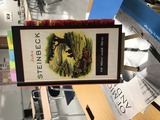
Activity Description: This activity is actually three different discussion-based activities to be used in a station rotation discussion day format. It does require some prework with the double journal note-taking graphic organizer included in the resources. This station rotation discussion format could be used with each chapter, a grouping of chapters, or at the end of the book. If you are encompassing the entire book, this activity will most likely take several days.Time needed for activity: 30-45 (10ish minutes per station)Resources needed for activity: student notes using the double journal note-taking graphic organizer (linked here and as a PDF in the resources) paper for timelines or internet access to https://time.graphics/ or another online timeline maker, internet access to an online discussion tool like https://pinup.com/ or a discussion forum on your LMS.Assessment strategies: See the attached rubrics for possible assessment methods.

A short quiz on CCSS.ELA-Literacy.RL.9-10.3, featuring a passage from Shakespeare's Macbeth. The passage has a Dale-Chall text difficulty level of 7-8, and a Flesch-Kincaid level of 7.0. (However, these metrics are not designed for poetry.)

A short quiz on CCSS.ELA-Literacy.RL.9-10.3, featuring a passage from Shakespeare's Macbeth. The passage has a Dale-Chall text difficulty level of 7-8, and a Flesch-Kincaid level of 7.0. (However, these metrics are not designed for poetry.)

A short quiz on CCSS.ELA-Literacy.RL.9-10.3, featuring a passage from Ken Kesey's book, One Flew Over the Cuckoo's Nest. The Dale-Chall text difficulty level of the pasage is 5-6, the Flesch-Kincaid level is 5.1.

A short quiz on CCSS.ELA-Literacy.RL.9-10.3 featuring a passage from Suzanne Collins's book, The Hunger Games. The passage has a Dale-Chall text difficulty level of 4, and a Flesch-Kincaid level of 3.7.
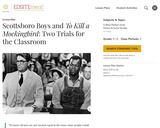
This lesson is designed to apply Common Core State Standards and facilitate a comparison of informational texts and primary source material from the Scottsboro Boys trials of the 1931 and 1933, and the fictional trial in Harper Lee's novel, To Kill A Mockingbird (1960).

PowerPointMentimeterKahoot